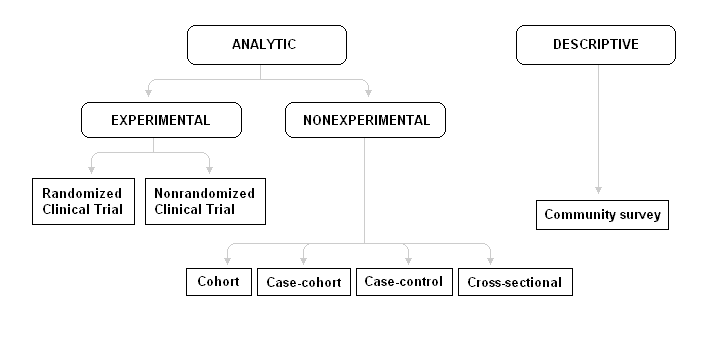Assessment |
Biopsychology |
Comparative |
Cognitive |
Developmental |
Language |
Individual differences |
Personality |
Philosophy |
Social |
Methods |
Statistics |
Clinical |
Educational |
Industrial |
Professional items |
World psychology |
Statistics: Scientific method · Research methods · Experimental design · Undergraduate statistics courses · Statistical tests · Game theory · Decision theory
Types of design
Some of the most popular designs are sorted below, with the ones at the top being the most powerful at reducing observer-expectancy effect but also most expensive, and in some cases introducing ethical concerns. The ones at the bottom are the most affordable, and are frequently used earlier in the research cycle, to develop strong hypotheses worth testing with the more expensive research approaches.
Experimental
- Randomized controlled trial
- Nonrandomized controlled trial
- Randomized database studies
Nonexperimental
- Cohort study
- [[Prospective studies
- Retrospective studies
- Nested cohort
- Time-trend study
- Case-cohort study
- Case-control study (case series)
- Cross-sectional study
Descriptive
- Community survey
Important considerations
When choosing a study design, many factors must be taken into account. Different types of studies are subject to different types of bias. For example, recall bias is likely to occur in cross-sectional or case-control studies where subjects are asked to recall exposure to risk factors. Subjects with the relevant condition (e.g. breast cancer) may be more likely to recall the relevant exposures that they had undergone (e.g. hormone replacement therapy) than subjects who don't have the condition.
The ecological fallacy may occur when analyses are done on ecological (group-based) data rather than individual data. The nature of this type of analysis tends to overestimate the degree of association between variables.
Other terms
- A "retrospective study" looks at past behavior, while a "prospective study" looks at future behavior.
- "Superiority trials" are designed to demonstrate that one treatment is more effective than another.
- "Non-inferiority trials" are designed to demonstrate that a treatment is at least not appreciably worse than another.
- "Equivalence trials" are designed to demonstrate that one treatment is as effective as another.
- When using "parallel groups", each patient receives one treatment; in a "crossover study", each patient receives several treatments.
- A longitudinal study studies a few subjects for a long period of time, while a cross-sectional study involves many subjects measured at once.
See also
External links
- Epidemiologic.org Epidemiologic Inquiry online weblog for epidemiology researchers
- Epidemiology Forum An epidemiology discussion and forum community to foster debates and collaborations in epidemiology
- Some aspects of study design Tufts University web site
- Comparison of strength Description of study designs from the National Cancer Institute.
- [1] Truman State University Political Science Research Design Handbook
Please copy and paste this prompt to other appropriate areas. Feel free to edit as necessary
Instructions_for_archiving_academic_and_professional_materials
Research design: Academic support materials
- Research design: Academic: Lecture slides
- Research design: Academic: Lecture notes
- Research design: Academic: Lecture handouts
- Research design: Academic: Multimedia materials
- Research design: Academic: Other academic support materials
| This page uses Creative Commons Licensed content from Wikipedia (view authors). |
